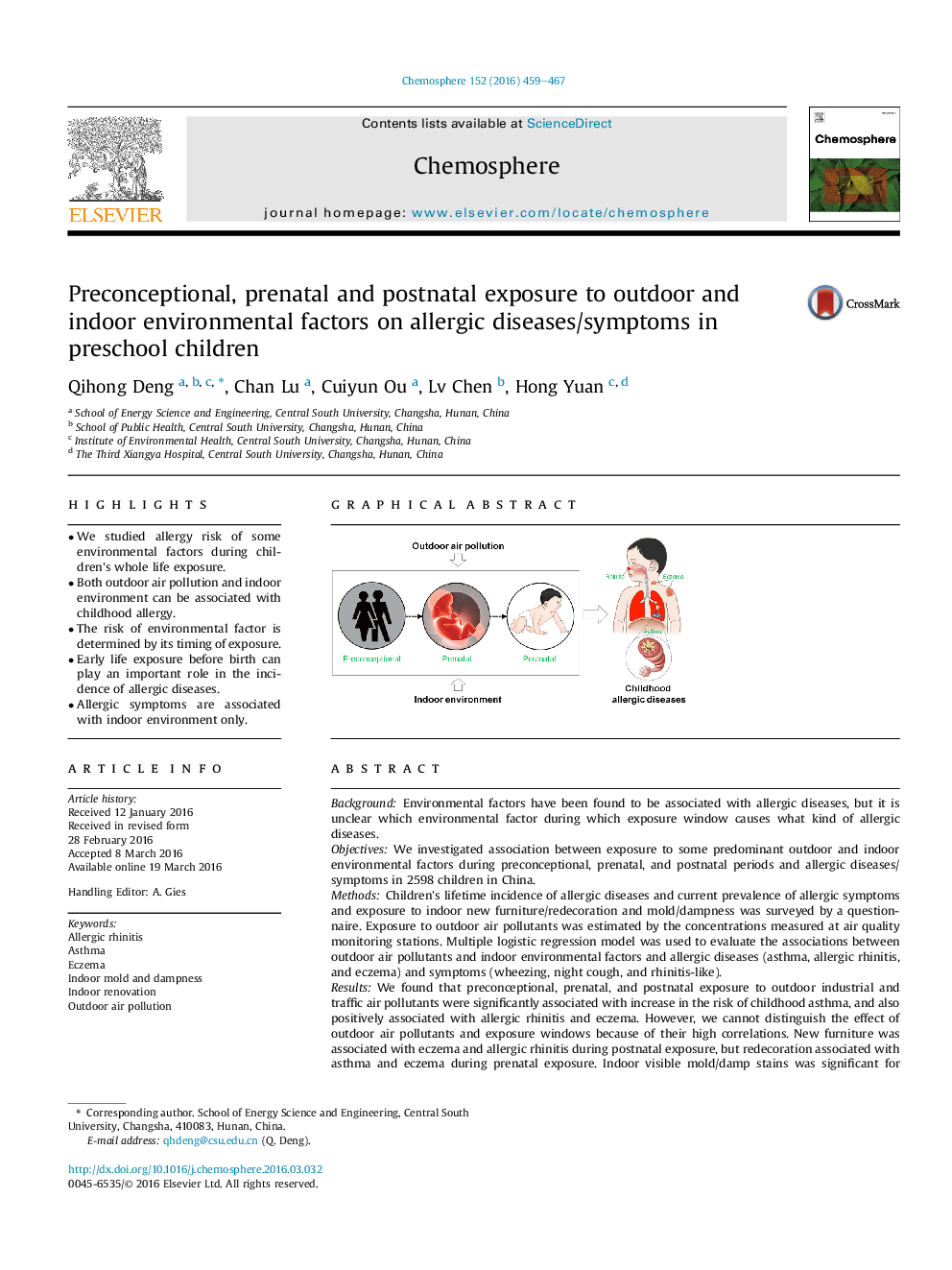| Article ID | Journal | Published Year | Pages | File Type |
|---|---|---|---|---|
| 6306984 | Chemosphere | 2016 | 9 Pages |
â¢We studied allergy risk of some environmental factors during children's whole life exposure.â¢Both outdoor air pollution and indoor environment can be associated with childhood allergy.â¢The risk of environmental factor is determined by its timing of exposure.â¢Early life exposure before birth can play an important role in the incidence of allergic diseases.â¢Allergic symptoms are associated with indoor environment only.
BackgroundEnvironmental factors have been found to be associated with allergic diseases, but it is unclear which environmental factor during which exposure window causes what kind of allergic diseases.ObjectivesWe investigated association between exposure to some predominant outdoor and indoor environmental factors during preconceptional, prenatal, and postnatal periods and allergic diseases/symptoms in 2598 children in China.MethodsChildren's lifetime incidence of allergic diseases and current prevalence of allergic symptoms and exposure to indoor new furniture/redecoration and mold/dampness was surveyed by a questionnaire. Exposure to outdoor air pollutants was estimated by the concentrations measured at air quality monitoring stations. Multiple logistic regression model was used to evaluate the associations between outdoor air pollutants and indoor environmental factors and allergic diseases (asthma, allergic rhinitis, and eczema) and symptoms (wheezing, night cough, and rhinitis-like).ResultsWe found that preconceptional, prenatal, and postnatal exposure to outdoor industrial and traffic air pollutants were significantly associated with increase in the risk of childhood asthma, and also positively associated with allergic rhinitis and eczema. However, we cannot distinguish the effect of outdoor air pollutants and exposure windows because of their high correlations. New furniture was associated with eczema and allergic rhinitis during postnatal exposure, but redecoration associated with asthma and eczema during prenatal exposure. Indoor visible mold/damp stains was significant for eczema during prenatal exposure and asthma during postnatal exposure respectively, but window condensation was significant for all childhood allergic diseases during both prenatal and postnatal exposures. Allergic symptoms in children were found to be associated with exposure to indoor factors only.ConclusionsAssociations between outdoor air pollutants and indoor environmental factors and childhood allergic diseases/symptoms were divergent and related to the timing of exposure.
Graphical abstractDownload full-size image
